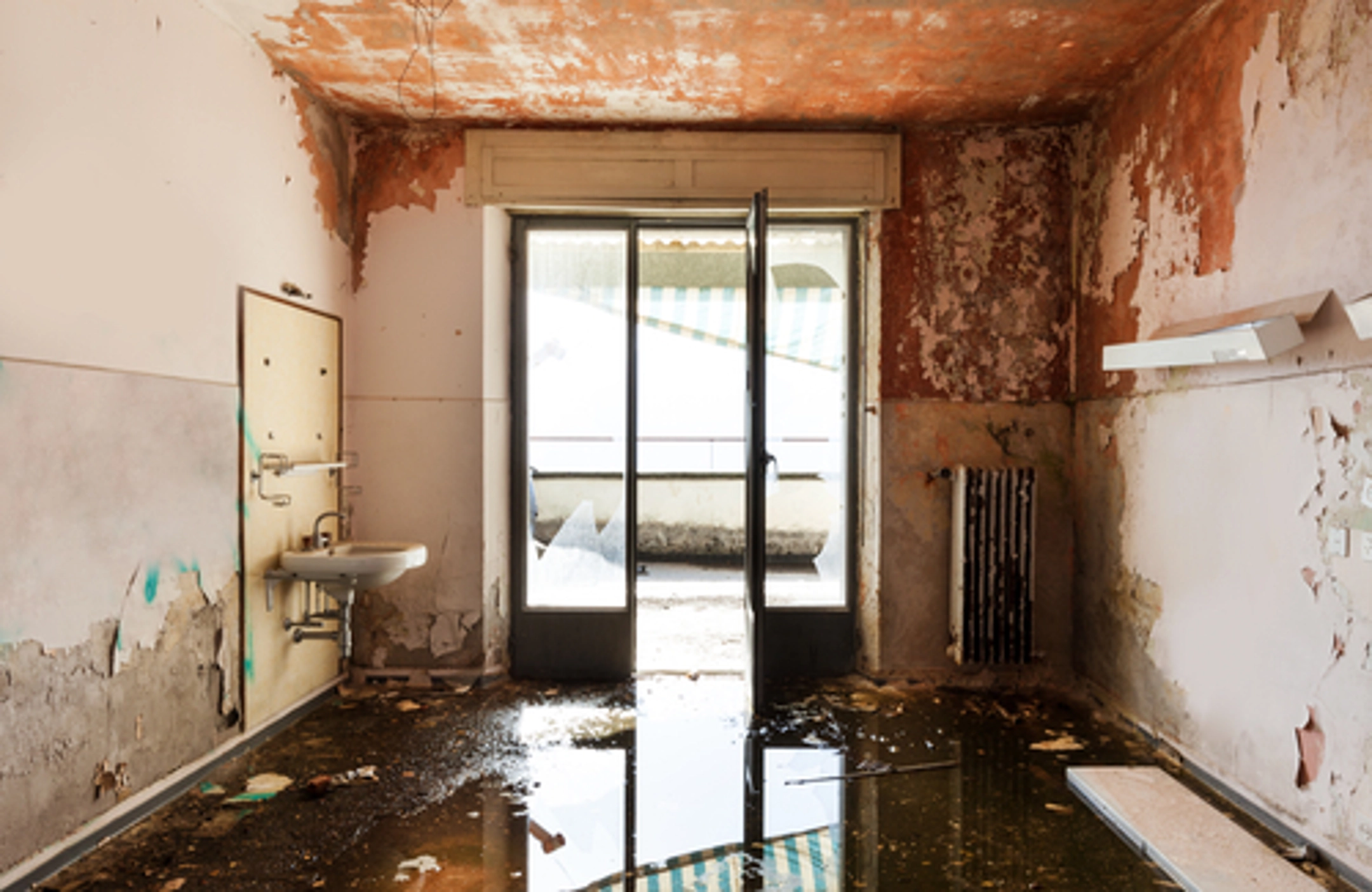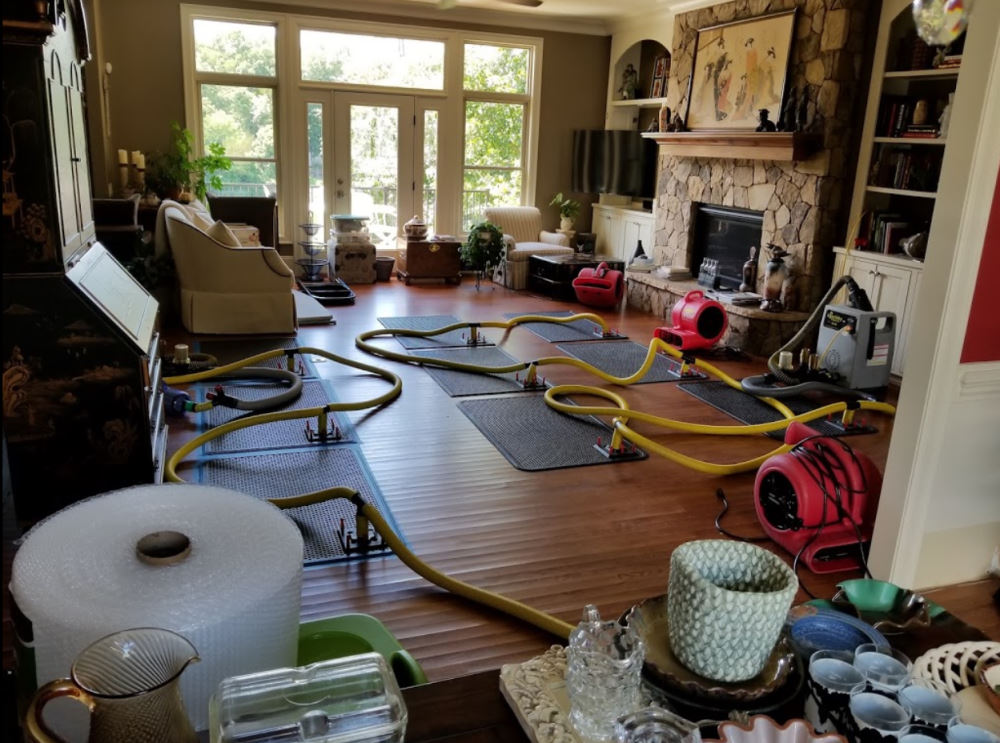Important Steps to Adhere To for Efficient Water Damage Restoration in your house
When confronted with water damage in your house, understanding the vital actions for reliable repair can make all the difference. You require to evaluate the damage and assurance safety prior to tackling the problem. Quiting the resource of water is important, yet it's just the start. When you have actually taken care of that, there's a series of activities you should require to safeguard your home from further problems. Let's discover what you ought to do following.
Evaluate the Damages
The first action is to evaluate the damages thoroughly when you uncover water damages in your home. Begin by identifying the source of the water breach. Look for leakages, burst pipes, or various other concerns causing the issue. Next, examine the influenced locations for visible signs of damages, including discoloration, warping, or mold growth. Don't fail to remember to search in hidden spots like behind walls or under flooring, as water can leak right into these locations unnoticed.Document the damages by taking clear images and notes. This will certainly assist you when reviewing the situation with your insurance supplier or reconstruction professionals. Take note of the kind of materials impacted, as different materials require various reconstruction strategies. Lastly, examine the degree of the damage. Is it small or substantial? Comprehending the scope will certainly lead you in making a decision whether to handle it yourself or contact the professionals for a more extensive remediation procedure.

Make certain Security
Before you start any type of reconstruction job, assuring your safety is important. Assess the condition of your home. If the water's deep or if you discover electrical risks, don't go into the location. Shut off the electricity and gas supply to prevent accidents. Wear protective gear like boots, masks, and gloves to secure on your own from impurities or mold.It's essential to remain mindful of your environments; watch for sharp items and slippery surfaces. Treat it as unsafe waste if the water is from a sewer backup. Keep children and pets away from affected locations to prevent exposure.Once you've taken these preventative measures, you can wage the reconstruction process. Remember, your safety comes initially, and if you're ever uncertain, it's best to consult a specialist. Taking these actions will help assure you prepare to tackle the reconstruction securely and efficiently.
Quit the Source of Water
After guaranteeing your security, the next action is to stop the resource of water. Determine where the leakage is originating from. It might be a burst pipeline, a malfunctioning device, and even heavy rain going into with a damaged roof. Transform off the primary water supply to your home to prevent additional flooding if it's a plumbing problem. For appliances, unplug them and close off their supply of water valves.If the source is outdoors, like rainwater, try to divert it far from your home using sandbags or various other barriers. For minor leakages, you could be able to make use of tape or a sealant momentarily until an expert can repair it. Remember, attending to the source rapidly is vital to minimizing damage and protecting against mold growth. When you have actually stopped the water, you'll be in a much better position to carry on to the following action in the restoration process.

Eliminate Excess Water
Act quickly to get rid of excess water, as standing water can result in more considerable damage and mold and mildew growth. Collect your tools: a wet/dry vacuum cleaner, containers, and towels. If the water is shallow, you can utilize towels to take in the moisture. For much deeper water, a wet/dry vacuum cleaner is your finest wager. Ensure to empty the vacuum cleaner regularly to prevent overflow.If the water is contaminated, like from a sewage back-up, wear safety gear, including masks and handwear covers, to keep on your own safe. When you have actually removed as much water as feasible, look for surprise pockets of moisture in edges and under furniture, as these can nurture mold.Don' t forget to transform off electric appliances and power electrical outlets in wet locations to avoid hazards. This preliminary action is vital in decreasing damage and establishing the phase for a successful remediation procedure.
Dry and Dehumidify the Location
Once you've eliminated the excess water, it's important to dry and evaporate the location extensively. Begin by making use of dehumidifiers effectively to pull moisture out of the air and avoid mold development. Watch on moisture degrees to assure the space dries completely.
Remove Standing Water
To efficiently deal with water damages, you require to concentrate on getting rid of standing water as promptly as feasible. Beginning by collecting needed devices, like a wet/dry vacuum cleaner or a pump, relying on the quantity of water. If the water is superficial, a vacuum cleaner needs to do the method. For bigger quantities, a pump is a lot more effective. While working, ensure to wear safety equipment to maintain yourself safe from impurities. As you remove the water, focus on hidden locations like under furnishings or in corners where water might collect. Once you have actually removed the bulk, your area will start to dry. This action is essential, look these up as sticking around water can cause mold growth and much more comprehensive damages.
Usage Dehumidifiers Efficiently
How can you properly utilize dehumidifiers to dry and evaporate your room? Begin by placing your dehumidifier in one of the most afflicted area, preferably where water damage is most extreme. Ensure to shut all doors and windows to create a covered environment. Switch on the dehumidifier and set it to the appropriate moisture level, normally around 30-50%. Empty the water collection container often, or think about using a model with a continuous drain alternative for comfort. Ideally, make use of fans to boost air flow, aiding the dehumidifier work more successfully. Keep the dehumidifier running till you're confident that the location is extensively dried out, protecting against mold development and additional damages (Water Damage Restoration St George UT). This action is vital for effective water damages restoration
Screen Moisture Degrees
Monitoring moisture degrees is important throughout the drying out procedure, as it assists guarantee your area stays without excess wetness. Purchase a trustworthy hygrometer to track moisture accurately. Preferably, you wish to keep levels between 30% and 50%. You may need to change your followers or dehumidifiers to enhance airflow if humidity readings increase above this variety. Inspect the analyses consistently, particularly in locations vulnerable to wetness, like bathrooms or basements. If you discover persistent high humidity, consider increasing ventilation or using additional dehumidifiers. Staying on top of these degrees not just accelerates the drying process but also avoids mold growth, guaranteeing your home keeps comfortable and safe.
Tidy and Disinfect Affected Surfaces

Restore and Fix Your Home
After cleaning and decontaminating the influenced locations, it's time to bring back and repair your home. Begin by reviewing the damages. Look for structural concerns, like deteriorated wall surfaces or floorings, and attend to any type of necessary repairs. Changing damaged drywall or floor covering is essential for both aesthetic appeals and safety.If your furniture or items were impacted, think about whether they can be recovered or need substitute. Clean or properly bring back items where possible.Next, paint walls and touch up any kind of areas that need attention. This not only boosts look but likewise protects surface areas from future water damage.Don' t neglect to inspect your pipes and appliances for leaks, making certain whatever's working properly. Lastly, take into consideration installing a dehumidifier to protect against future moisture problems. By taking these actions, you'll restore your home to its former splendor and develop a safer living atmosphere.
Regularly Asked Questions
How Much Time Does Water Damage Repair Typically Take?
Water damage repair commonly takes anywhere from a few days to several weeks, depending upon the level of the damage (Smoke Damage Restoration). You'll wish to evaluate the circumstance swiftly to decrease further complications and ensure appropriate Full Report repair
Will My Insurance Policy Cover Water Damage Restoration Expenses?
Your insurance policy could cover water damages reconstruction prices, yet it depends on your plan. Check your coverage details and call your insurance representative to clarify what's consisted of and what you require to submit an insurance claim.
Can I Handle Water Damages Restoration Myself?
You can handle water damage reconstruction on your own, yet it's crucial to examine the circumstance initially. If it's comprehensive, you might wish to call professionals. Constantly prioritize safety and assure you have actually got the right devices.
What Are the Indications of Hidden Water Damage?
You could observe signs of hidden water damages like distorted wall surfaces, mildewy odors, or discoloration. If your floorings really feel spongy or you place mold, it's time to investigate better before the situation aggravates.
Exactly How Can I Protect Against Future Water Damage in My Home?
To avoid future water damage in your house, you should on a regular basis inspect pipes, seal splits, keep rain gutters, and warranty proper drain. Mounting a sump pump and moisture barriers can likewise aid keep your area dry. When you discover water damages look at this web-site in your home, the initial step is to evaluate the damages extensively. Act quickly to eliminate excess water, as standing water can lead to extra extensive damage and mold and mildew growth. To efficiently deal with water damages, you require to concentrate on removing standing water as rapidly as possible. As you eliminate the water, pay focus to concealed locations like under furniture or in edges where water may collect. Water damage restoration normally takes anywhere from a couple of days to a number of weeks, depending on the level of the damage.